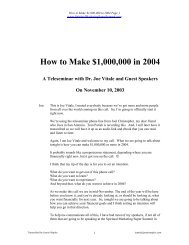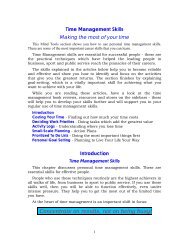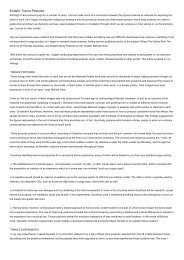Executive Coaching - A Guide For The HR Professional.pdf
Executive Coaching - A Guide For The HR Professional.pdf
Executive Coaching - A Guide For The HR Professional.pdf
Create successful ePaper yourself
Turn your PDF publications into a flip-book with our unique Google optimized e-Paper software.
What Is the Client’s Role? 81<br />
...............................<br />
of many interactions, so the early experiences with the coach are critical<br />
for establishing a strong relationship. <strong>The</strong> client must feel reassured<br />
that the coach “has what it takes” to serve as a guide through<br />
the journey of self-exploration and personal development.<br />
<strong>Coaching</strong> engagements evolve over time. <strong>The</strong>re’s no way to<br />
know exactly how things will progress, or whether revisions will be<br />
needed in the ground rules, the goals, or the methods. Encourage<br />
the client to feel free to talk about these with the coach.<br />
Taking Responsibility<br />
<strong>The</strong> client should be the “owner” of the goals for the coaching and<br />
for the steps for achieving them. When these are reasonably clear<br />
to the client, then the best course for the client is to move forward<br />
boldly. <strong>The</strong> client must accept feedback from whatever sources—<br />
assessment instruments, official appraisals, informal comments, the<br />
coach’s interviews—and make good use of it. <strong>The</strong> client will have<br />
to engage in some behaviors that may make him or her feel uncomfortable,<br />
such as trying new ways of doing things, getting feedback<br />
from people who saw the client do things differently, learning what<br />
helps and what doesn’t. <strong>The</strong> coach can serve as a catalyst, but ultimately<br />
it is only the client who can make change happen. You can<br />
help the client by acknowledging where the responsibility lies and<br />
that it is normal to feel some apprehension.<br />
<strong>Coaching</strong> requires that the client give voice to his or her thoughts,<br />
hopes, and feelings. If this is not something the client normally does,<br />
then at first it may feel as it does when one is exercising an unused<br />
muscle. <strong>The</strong> client needs to work through this and keep going. It will<br />
come more easily when the client accepts the ownership and responsibility<br />
for making a success of the coaching effort. <strong>The</strong> coach can<br />
only be a catalyst—the client has to make it happen.<br />
This is obvious, but not easy. Why is it difficult? <strong>For</strong> the same<br />
kinds of reasons that diets, good health habits, and New Year’s<br />
resolutions are difficult. Just because it makes sense doesn’t mean<br />
we’ll do things that way. We’re accustomed to putting blame on

















